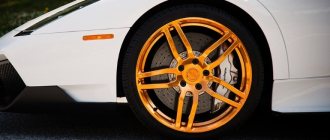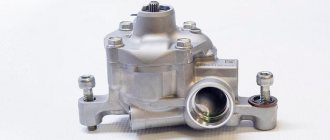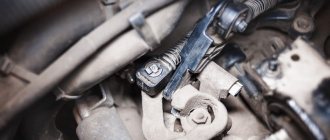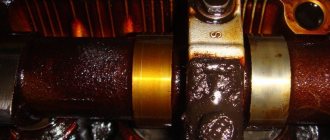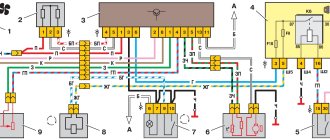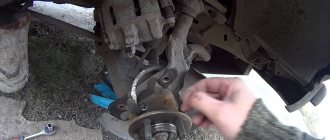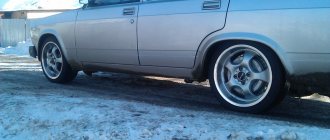Steering wheel shift paddles are special levers that help the car driver quickly change gears. They are usually found in cars with any type of automatic transmission. Shifters were widely used in sports cars, but now they are becoming an expensive option for almost any car.
Paddle shifters are usually located directly under the steering wheel. They are mounted on the steering wheel itself, so when turning, you can easily find them without even looking at the steering wheel area. Many drivers who have already tried driving a car with paddle shifters say that they would never buy a car without this option.
Today we will try to find out whether this feature is really worth your money and how it works on different cars and with different types of transmissions.
How are paddle shifters useful?
They mainly help you select a gear while driving. If you feel the car is moving too slow, simply use the shifter to downshift and get better acceleration. If you feel the engine revs too much, use the shifter on the opposite side to shift into higher gears. This way the engine will operate at lower speeds and provide the same speed.
The paddles are connected to an electronic system that interacts with the gearbox. As soon as you pull the steering wheel paddle, the electronic system will send a signal to the gearbox and the mechanism will change gear according to your needs. It's really very simple.
Car active steering diagram
Taking into account the complex design of the active steering mechanism, as well as understanding what certain parts are responsible for, we should consider the laughter of the mechanism.
- steering angle sensor;
- steering wheel shaft;
- shaft gear;
- steering wheel torque sensor;
- electronic control unit;
- electric motor;
- rack;
- amplifier gear.
We can say that these are the main parts of the active steering system. In addition to the listed elements, the mechanism also includes a reservoir for working fluid, an emergency lock, connecting hoses, a gearbox and a system valve.
How to use the paddle shifters?
This question is quite difficult to answer briefly. Each car may have its own settings and features of using the steering wheel paddle shifters. One car will allow you to automatically switch between manual and automatic modes, the other will require you to manually select the driving mode. One car will help you choose gears wisely using automatic transmission, while another will force you to rely only on your choice. One box will quickly switch to the desired gear, the other will make you wait.
But there are still general instructions on how to use paddle switches:
- Start the car.
- Press the brake pedal.
- Place the gear shift lever in driving mode.
- Place the gear shift lever into manual mode.
- Start using steering wheel paddle shifters.
Typically, the right paddle shifter is for shifting up 1 gear, and the left paddle is for shifting down 1 gear. Press the paddle twice and you change two gears at once.
When the shift lever is in manual mode, the automatic transmission will stop shifting until you use the paddle shifters or the shift lever.
Conversion options
Manual control on a car has several varieties:
For one hand
This device is designed to control a car with one hand if the functionality of the second is impaired. The main problem in this case is switching the speed mode. For control, the leg is fixed with a belt to move the lever when changing gears, and auxiliary control levers are installed on the dashboard or driver's steering wheel.
For both hands
This system allows you to drive a car with your hands without using your legs. The brake pedals are controlled through a specialized bracket. All rods and levers are connected by hinges, and if you move the lever forward, the car slows down, and if it moves backward, it moves. If you do not touch the lever, it takes a neutral position.
How to drive correctly with paddle shifters?
The ability to manually change gears allows the driver to control the acceleration of the car, select the desired driving mode, and, if necessary, achieve better dynamics. But you should know some rules in order to use the option effectively and safely for your car.
First, try not to accelerate the engine to the red zone of the tachometer. If you frequently rev your car's engine to maximum speed, it will begin to wear out quickly. For frequent use of sport mode, you need to prepare the car using special oil, as well as ensuring better engine cooling. For most vehicles, the optimal speed is between 1500 and 2000 rpm when driving at a constant speed. If you rev the engine to 5,000 rpm or more, you will shorten its life. It is believed that shifting gears at 2500 rpm will be optimal in terms of efficiency.
If you want to save fuel, you can rev it up to just 1,500 rpm and shift into a higher gear. But let’s say right away that this will not help you save money. Thus, you only increase the load on the engine and its service life is reduced. Fuel consumption will remain the same as in the optimal gear shift mode.
Of course, you need to understand what engine is installed in your car. The rules will be different for 5-liter engines and for 1-liter turbocharged internal combustion engines. The smaller the engine size, the more revolutions will be required for normal acceleration of the car.
Before switching to manual mode, read the vehicle's operating instructions and find out what speed the manufacturer recommends as optimal for changing gears on your engine. This will help you understand when to upshift and downshift using the paddle shifters.
Advantages and disadvantages of the AFS system
Like any mechanism, the active steering system has positive and negative sides. Despite the complexity of the mechanism, there are many more advantages, but there are practically no disadvantages. Among the positive aspects of the AFS system are light weight, increased reliability in operation, safety, and comfort.
There are practically no negative aspects to active steering systems, since the mechanism works flawlessly and rarely fails. If a failure does occur, and most often it is a failure or complete failure of the electronics, then you will not be able to fix it yourself. It is necessary to go to specialized services for repairing the AFS system.
What cars have paddle shifters?
There are hundreds of cars that can be equipped with paddle shifters. But usually this option is offered for additional money. In many cars, you will be able to manually select gear on an automatic transmission using the gear lever, but this is often not as convenient. The paddle shifters provide a race car feel and allow you to change gears with one easy flick of the paddle.
At the end of the article we will describe a group of car manufacturers with their offerings of steering wheel mounted switches, but for now let's talk a little about the system itself.
what is this, photos and videos
Ferrari steering column with gear shift levers The idea of placing gear shift levers on the steering wheel was first implemented on sports cars. Similar designs appeared in the eighties of the last century on cars participating in Formula 1 races. The very first team to install paddle shifters on a racing car was Ferrari. Later, these systems began to be installed on racing cars of other brands, and after some time they appeared on ordinary production cars.
Which gearboxes can have paddle shifters?
Obviously, automatic transmissions can offer you the ability to change gears using those handy paddle shifters. But you might be surprised to know that manual transmissions can also have paddle shifters. They are usually found on racing cars. These transmissions will still require a clutch pedal, but it will only be used when starting and stopping. There are no production cars with this manual transmission option.
All types of automatic transmissions can have steering wheel shift paddles. Classic automatic transmissions like Ford's Select Shift, robotic transmissions like PowerShift, and continuously variable transmissions (CVTs) can all have paddle shifters.
You may ask, how can CVTs even have paddle shifters if they don’t have gears as such? In this case, the steering column switch changes the transmission operating mode. When you press minus, the transmission makes the engine rev higher so you have more torque for faster acceleration.
History of origin
Like many technical solutions familiar to us today, steering wheel shift paddles were born in the world of motorsport. Towards the end of the 80s of the last century, new electromechanical gearboxes began to be installed in Formula 1 cars, instead of the usual mechanical ones. And this allowed manufacturers to use a fundamentally new way of changing gears. Namely, without taking your hands off the steering wheel. After all, in the world of Royal Racing there are such speeds at which you cannot take your eyes off the road even for a second. Otherwise, the racer risks ending up outside the track, stuck in a concrete wall.
The first team to introduce steering column mechanisms was the Italian Ferrari. Having assessed the advantages and safety of the new technical solution, other teams also equipped their cars with similar devices. Since then, Formula 1 drivers have used paddle shifters exclusively.
How to do engine braking using paddle shifters?
Engine braking generally doesn't work well with automatic transmissions. But paddle shifters turn the automatic transmission into a partially manual transmission, so engine braking is possible.
Again, in different cars you will have different ways of engine braking. You may need this when driving up and down hills, for example.
The idea is quite simple:
- remove your right foot from the accelerator pedal;
- Pull the minus stalk on the steering wheel to shift down one gear;
- As soon as the engine speed approaches 2000, pull the minus blade again;
- If necessary, continue to do this using the brake pedal.
CVT transmissions must have engine braking enabled. For example, in Honda cars, to turn it on, you need to pull both steering column switches and hold them for several seconds. L mode is activated and the car simulates engine braking. To turn off this mode, simply pull both blades and hold them again.
How to install steering column switches?
Paddle shifters have become a very popular idea, which is why many car owners are wondering if they can install them in their cars. This is likely possible if your car model and modification has steering wheel paddle shifters as an option from the manufacturer. Otherwise, all the headache and money is not worth it.
You won't be able to get the shifters to work properly without major changes to the transmission control computer system. It is difficult to even estimate the budget for such a change.
Principle of operation
During squeezing, a signal is transmitted from the lever to the electronic unit, which activates the automatic transmission solenoids, and the gear ratio changes. The driver of the car can only select the moment of switching, and the computer, using electric drives, will automatically switch on the desired speed. The fact that the drives are not directly connected to the steering column paddles makes it possible to place them anywhere, but the most suitable one is still the steering column paddle. There are alternatives to this design. For example, on the Mazda sixth series, the steering column is equipped not only with a pair of paddles, but also with speed reduction levers on both sides. This is done so that the driver of the car can increase and decrease the speed with one hand.
Activation of manual control in various designs can occur either by simply pressing the petals, or by selecting this mode on the main selector. If the paddles are not used for a long time, special systems will automatically switch the transmission to normal control mode.
How do paddle shifters work in different cars?
In a BMW, you don't have to select manual mode to engage the steering wheel paddle shifters. They are always active. If you want to overtake someone on the road, just pull the left paddle to downshift and start accelerating faster. After about 30 seconds the car will return to automatic mode. Then, if you want to go into Sport mode (DS), just start using the paddle shifters. The engine computer will not allow you to go beyond safe speed limits, so it is almost impossible to damage the engine and transmission. The BMW Steptronic transmission is considered the ideal option for steering wheel paddle shifters.
Subaru CVT transmissions also have steering wheel paddle shifters. To allow drivers to use the functions of a manual transmission, the manufacturer has created a kind of imitation of 6 gears in a CVT transmission. When you start using paddle shifters in your Subaru, you will experience a completely different car behavior.
In the Mini Cooper, you can use the paddles in both Drive and Sport modes. However, there are some differences. In Drive mode, the transmission will gain full shift control 15 to 20 seconds after you've downshifted or upshifted it using the paddle shifter. In Sport mode, touching the paddles takes you into full manual mode. The computer only makes sure that you do not cause any harm to the engine and gearbox.
In Mercedes cars, the steering wheel paddle shifters are activated as soon as you pull one of them in Drive mode. The display will begin to show useful information so you can shift more efficiently. The computer will still work to maintain optimal engine speed.
There are many other manufacturers that install paddle shifters on their vehicles. But almost all of them work the same way as the types described above.
Design features and scope of application
How to use Karcher correctly when washing a car
The idea itself of moving the automatic transmission shift lever to the steering column is not at all new; since the middle of the last century in the USA, the vast majority of cars have been equipped with just such a mechanism. So the paddle shifters are just a logical development of the design in accordance with modern realities.
In most cases, this innovative approach does not find sufficient support in the form of consumer demand, because people are not willing to change their own habits. The fact is that on a subconscious level, questions arise, first of all, about the reliability of the design, as well as the possibility of using traditional turn signals and the risk of touching the gear shift lever.
“In any case, a certain percentage of buyers will want to buy a car with this design.”
, says Erich Heuschle, engineer at Fiat Chrysler Automobiles. He works on FCA's SRT racing brand with the people responsible for creating cars like the 707-horsepower Dodge Hellcat. Heuschle is also one of FCA's elite group of engineers, which was created to test designed vehicles to their limits. That is, he has the right to make his proposals to the design until it meets his high requirements. “Transmission paddles are now perceived more as a luxury or driving feature rather than a high-performance design, thanks to the refined nature of the automatic.”
, - he said.
“We put a lot of effort into ensuring that the automation functions perfectly.”
In most cars, such switches are used to facilitate the control process and quickly select the desired gear. As a rule, the lever on the right side of the steering wheel is used to change to an upshift, and on the left - to a downshift. Cars equipped with an automatic transmission may have other methods of shifting, for example using buttons on the selector, or switching to manual mode and selecting a gear using a lever.
“You can use the paddle shifters together with cruise control, which will allow you to keep the engine at a strictly defined speed”
, Heuschle explained, adding that performance may be the most popular reason for using such a mechanism. It is worth noting that he has extensive experience in designing sports cars, so the technical side of the issue is rather determined by the desire to realize the full potential of the car being created.
He said that in automatic mode, the eight-speed ZF found in the Challenger SRT Hellcat is capable of shifts in just 160 milliseconds, which is quite fast and can even rival some dual-clutch cars that are often cited as the fastest vehicles on sale.
For reference, the Bugatti Veyron can move from a standstill in 8 ms, while the Nissan GTR does it in 150 ms. But sport and the pursuit of record performance are not the only areas of application for steering wheel-mounted gearbox controls.
In fact, Heuschle explained that most of the statistics SRT cites in its releases are achieved with the car in automatic mode. “I want shifters to be completely unnecessary,” he said, explaining that manual shifting may not be the most efficient for such cars. “On the tracks where we test our products, this is an unnecessary feature. But again, not all roads are like our model test sites, which results in the continued need to use manual switches.”
He also explained that at the race strip, where the SRT Hellcat is the leader in most metrics, automatic mode is the fastest method of getting to the finish line. The Hellcat accelerates from zero to 60 mph in the middle of its third-gear operating range. And the National Hot Rod Association (NHRA) has documented an official quarter-mile time of 11.2 seconds with civilian tires or 10.8 seconds with low-rolling-resistance radials. "The Hellcat is NHRA-certified operating exclusively in automatic mode." Heuschle said.
